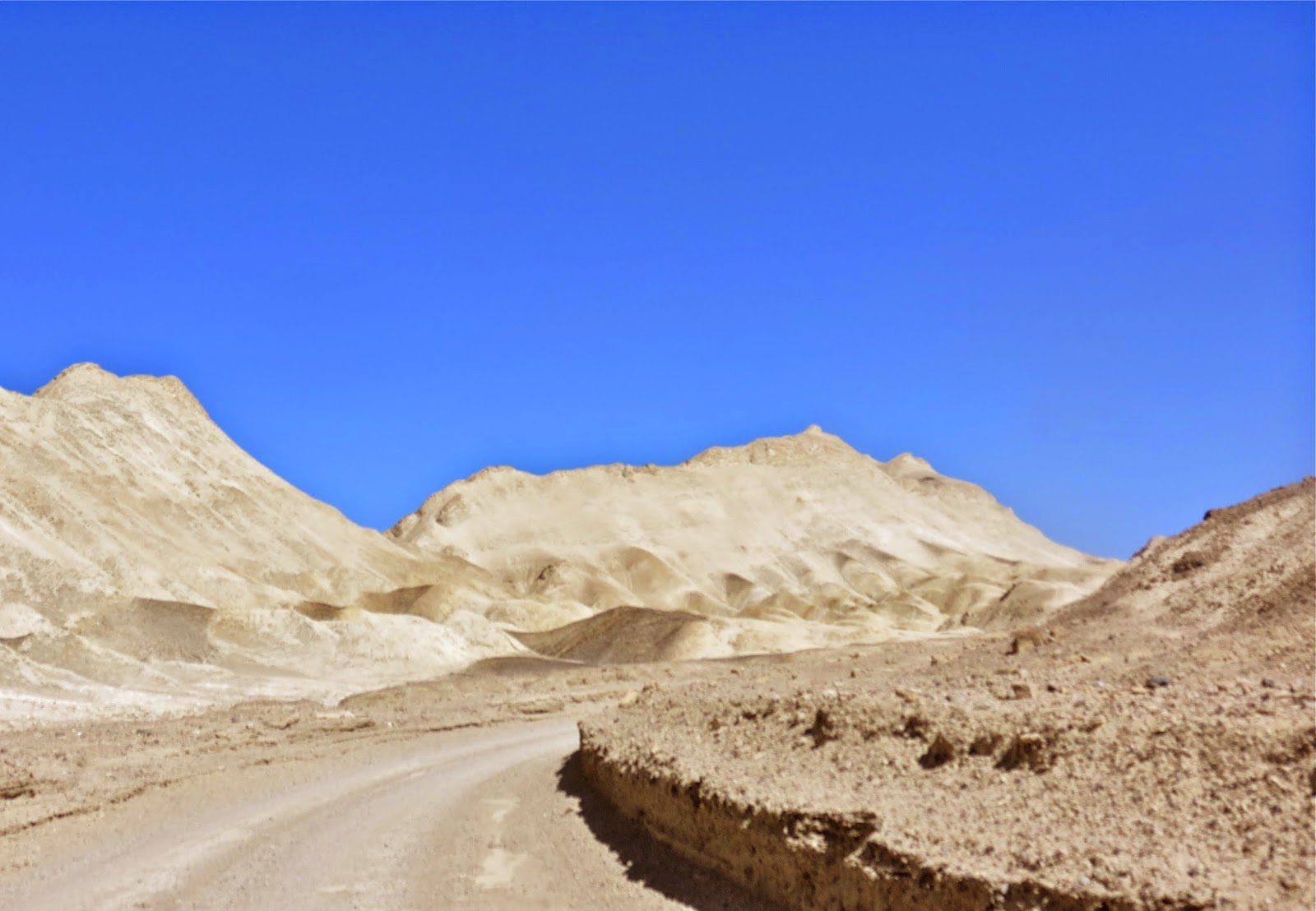We stayed 3 days at Death Valley, and so I will make 3 separate blog posts to keep them shorter. Not a strong internet connection, but there is some. Our first afternoon we decided to tour some of the areas near Furnace Creek Campground where we were staying with full hook-ups. We went to the Visitor Center:
Where temperatures hit 3 digits while we were here. But we had AC in the RV and in the car, and early mornings were cool for hiking, so we were ok.
Our sites at Furnace Creek campground.
We drove by Zabriskie Point because tour buses were there, and stopped on the way back.
We passed some privately run modern-day mining operations on our way to Dante's View.
A law passed in 1976 gave the National Park more control over mining activity. Prospecting is no longer allowed, and existing privately-owned mining claims must follow strict guidelines.
The road takes us more than 5000 feet above the floor of Death Valley to a mountaintop overlook.
Dante's View. It is 25 degrees cooler up here.
Directly below us is Badwater Basin, the lowest point in North America. We can see people walking out on the salt flats.
On the way back down the mountain, this Desert Spiny Lizard posed for pictures. He blends in well with his surroundings.
Back in the Valley you can't help but notice the remains of Borax mining.
A scenic drive has been created through the badlands...a legacy from years of Borax mining.
Borax is referred to as "white gold," as it is the mineral that brought the most wealth to mining prospectors here.
Only one plant seems to prosper here...the Desert Holly.
The tour buses are gone from Zabriske Point, a popular viewpoint at sunrise or sunset. We are here in late afternoon.
View of the badlands from Zabriskie Point.
This viewpoint was built in the 1930s soon after the focus here was turned from mining to tourism.
The black layer across the wash is volcanic lava that oozed out into the ancient lakebed.
Seismic activity, water flow, and erosion have caused the uplift and other-worldly shapes you see today.
Back at our campsites the almost-full moon rises as the sun sets, casting a reddish glow on the mountains.
























No comments:
Post a Comment
Due to recent spam in comments, new comments will now await approval before publishing.